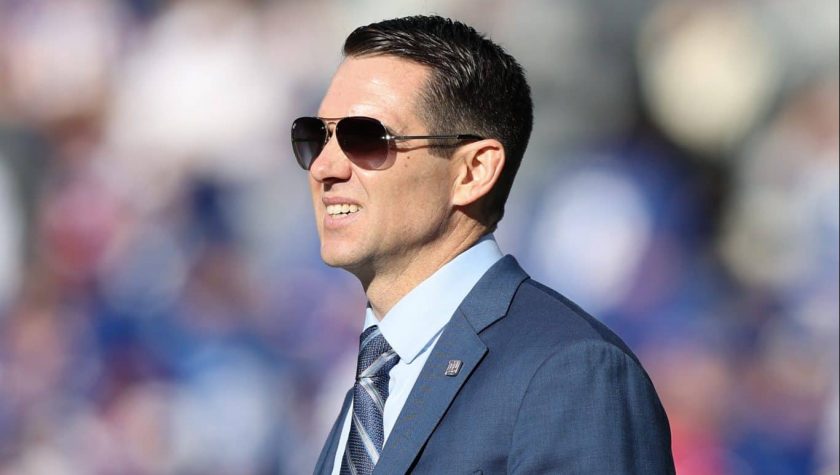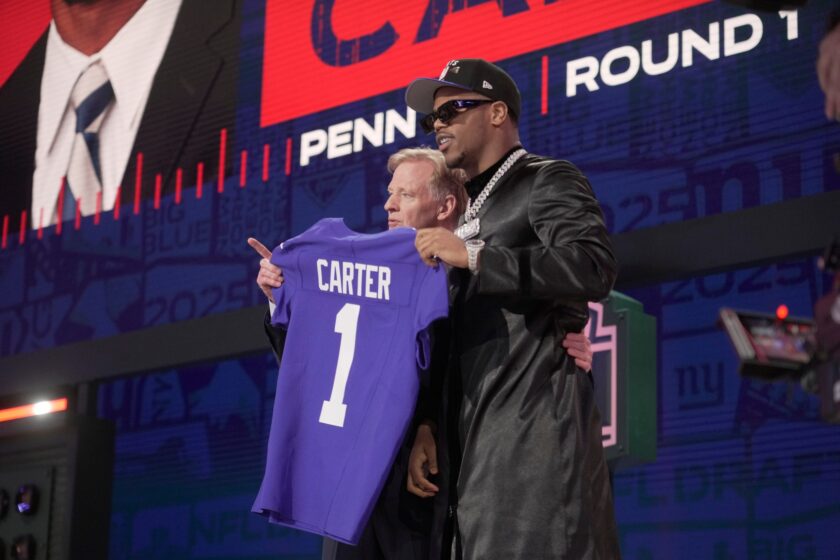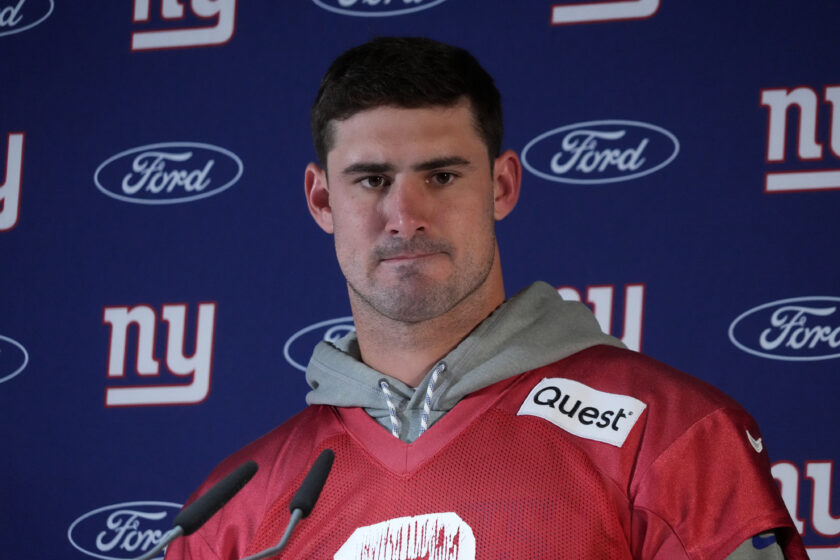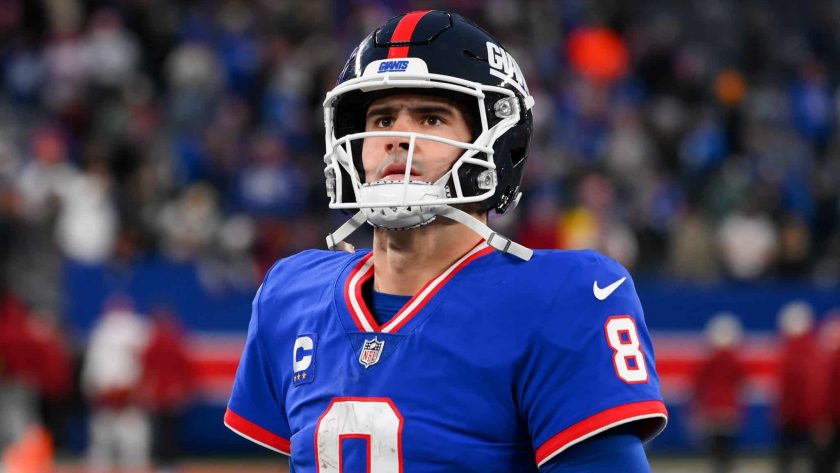Giants’ Joe Schoen is acing Year 2 test so far

Giants general manager Joe Schoen didn’t have much to work with in his first offseason with the team last year. He was too busy cleaning up the financial and personnel mess his predecessor, Dave Gettleman, left him.
But things were different in 2023 — Schoen had cap space to work with and opportunities to improve the roster. And with training camp now underway, it’s safe to say the second-year GM has done his job.
Let’s take a look at five of Schoen’s biggest offseason moves and discuss each’s impact.
Extending QB Daniel Jones
Why was the move made? There wasn’t any other route the Giants could’ve taken at the game’s most important position. Jones was set to be a free agent after leading his team to the postseason, Big Blue didn’t have the draft capital to trade up and take a quarterback, and there was no way Schoen was conjuring up the money to make a move for Lamar Jackson.
Bringing back Jones on a long-term deal — and not the franchise tag, so they could use it on running back Saquon Barkley — was always the most reasonable route. Especially considering Jones’ experience with this offense and head coach Brian Daboll’s playbook.
Why is it a great deal? The move provides the Giants with continuity under center, and it’s not as expensive of a contract as you think. While it’s a 4-year, $160 million deal, the $82 million in fully guaranteed money runs out after two seasons, after which they could cut him if needed.
It’s a great move for now and it isn’t a lengthy, absurdly expensive commitment like other quarterback contracts around the league (Russell Wilson, Deshaun Watson, etc.).
Signing (tagging) RB Saquon Barkley
Why was the move made? Bringing back Barkley after he essentially revived his career last season (career-high 1,312 rushing yards, second Pro Bowl appearance) was always a goal for this front office. But they weren’t going to overpay for him, especially after the running back market tanked this offseason (the highest AAV of a new deal was $6.25 million, which went to the Panthers’ Miles Sanders). Thus, they agreed to a one-year deal that could reach $11 million.
Why is it a great deal? The team’s biggest star, most explosive and dynamic playmaker, and face of the franchise is back for training camp. And on a cheap deal that carries the $10.1 million cap hit. The Giants basically got him back on the tag price (which he was so inclined to pass on) plus $909,000 in incentives that he might not fully receive.
For Barkley to earn the full incentive package, he would need to rush for 1,350 yards (would be a career-high), score 11 total touchdowns (hasn’t done that since 2018), catch 65 passes (hasn’t done that since 2018), and the Giants need to make the playoffs (despite a brutal regular-season schedule).
Extending DL Dexter Lawrence
Why was the move made? Lawrence deserved an extension after putting together the most productive season of his career last year. He led the team with 7.5 sacks and 28 quarterback hits and helped lead a defensive turnaround under the watch of coordinator Wink Martindale. His efforts in the pass-rushing department helped the Giants finish in the top half of the league in passing defense.
With all that said, he deserved to be paid handsomely.
Why is it a great deal? No down lineman is surpassing Aaron Donald’s average annual value ($31.67 million) anytime soon, so let’s just say the defensive tackle market at the beginning of the offseason capped at the Colts’ DeForest Buckner ($21 million AAV).
The market was then reset by Washington’s Daron Payne on March 13 ($22.5 million), before Tennessee’s Jeffery Simmons reset it again on April 7 ($23.5 million).
Simmons’ deal was to supposed to serve as the benchmark for a Lawrence deal…at least we thought.
Schoen was somehow able to bring Lawrence back on a new deal ($21.88 million per year) that didn’t reset the market. Lawrence’s AAV is actually just the fifth-highest among defensive tackles right now.
Extending OT Andrew Thomas
Why was the move made? Because he’s a top-five player at the game’s second-most important position. Thomas struggled mightily as a rookie after the Giants took him fourth overall in 2020, but he’s ascended to one of the more dominant blindside blockers in the game, having earned second-team All-Pro honors last season.
So to reward his efforts, which played a big role in the offense’s turnaround and playoff berth last season, Schoen signed Thomas to a five-year, $117.5 million contract with $67 million guaranteed at signing (the record guarantee for offensive linemen).
Why is it a great deal? It isn’t a market-resetting deal in terms of AAV (Thomas’ AAV is $23.5 million while Laremy Tunsil is atop the NFL at $25 million). But it does reset the market for guaranteed money, so the financials are sort of a moot point here.
Instead, the main reason this is a great deal is the Giants got it done sooner than later. Thomas was under two more years of team control after Schoen exercised his fifth-year option in May. So they could’ve been patient with this one. But if the Giants sat on the extension for another season, there’s a chance Thomas could’ve been even more valuable next year. And there’s also the chance various offensive tackles would’ve signed big-money deals by that point.
Then, you’re looking at a Thomas contract that’s more than $23.5 million per year, with guarantees higher than the record-setting $67 million.
Trading for TE Darren Waller
Why was the move made? The Giants needed a premier pass-catcher but there wasn’t much to choose from on the wide receiver market. So they went with the trial-by-committee approach at receiver and traded for a dynamic tight end in Darren Waller. Heading into a crucial 2023 campaign, Waller is expected to be the Giants’ leading receiver.
Why is it a great deal? For one, Schoen was able to somehow flip an unreliable Kadarius Toney (who he didn’t draft) for one of the top tight ends in the league. The third-round pick received from the Chiefs in the Toney trade was sent to the Raiders for Waller in March.
And also, there’s little risk to taking on Waller’s expensive contract. The tight end is under a three-year, $51 million extension and only has one year remaining of guaranteed money left on the deal ($1.165 million, per Over The Cap). The Giants are most certainly making a multi-year commitment in him, but the contract allows them to cut Waller after 2024 and only incur less than $8 million in dead money over the two following seasons.






